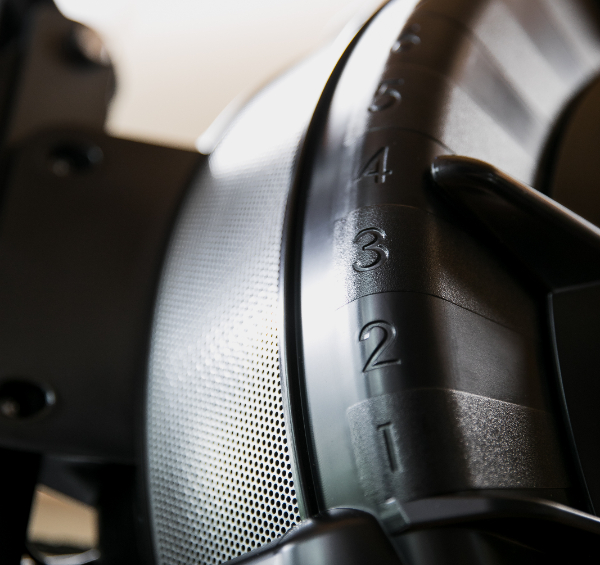- Track your orders
- Save your details for express checkout
Blog
Making Sense of Drag Factor and Resistance on the Indoor Rower
Here at Concept2 we are often asked the question- what drag factor should I be rowing on? While it would be convenient to give a one-size-fits-all answer, the adjustable resistance on the flywheel allows for a variety of different settings, for a variety of different people and purposes. Understanding how the drag factor feature functions and knowing the technical values of the rowing stroke is key to making an informed decision on which drag factor is best for you, so we break down the basics to help you get started on the right track.
What is Drag Factor?
If you are a regular rower, you will already be familiar with the resistance lever on the flywheel that allows you to adjust your workout resistance within the range of 1-10, 10 being the highest resistance and 1 being the lightest. As you move the lever from one through to 10, you are effectively closing off the air-flow of the flywheel, causing an increase in resistance.

The lever on the side of the flywheel offers easy resistance adjustments between 1-10
When we refer to drag factor, we are talking about the numerical value at which the flywheel is decelerating between strokes- the faster the deceleration, the slower the flywheel is moving at the beginning of the next stroke, and therefore the heavier it will feel to the rower. There are two ways to mitigate the deceleration of the flywheel- one way is to adjust the drag factor to a lighter setting, the other is to increase stroke rate. Knowing which of these two options you should take requires an understanding of rowing technique and stroke efficiency.
Basic Principles of Rowing Technique
Rowing technique is multi-faceted, and a constant work in progress for even the best rowers in the world. When it comes to the relationship between technique, stroke rate and drag factor, there is one key principle that is important to understand- the drive to recovery ratio.
Rowing coaches and trainers will talk about a 2:1 ratio, where 2 represents the recovery, and 1 represents the drive. The ratio dictates that for every second you spend on the drive, twice that should be spent on the recovery. This ratio has been identified over years of study and experimentation in both on-water and indoor rowers, to maximise and refine stroke efficiency. On the indoor rower, the 2:1 ratio gives the rower time on the recovery to sequence the stroke correctly, and flush out lactic acid before accelerating on the dynamic driving phase of the stroke, enabling optimum efficiency.

The recovery to drive ratio is a key principle of efficient rowing technique
With this in mind, as a rower increases their stroke rate, so too must the speed of the drive increase, in order to allow the recovery phase to increase in keeping with the 2:1 ratio. If the rower has a stroke rate in mind but the drag factor setting is too high, they will find it very difficult to maintain the correct recovery: drive ratio, as the drive will become too heavy to accelerate past a certain point. In this situation, lightening off the drag factor will allow a more dynamic drive, enabling a quicker recovery and overall higher stroke rate. The optimal stroke rate and drag factor for you will therefore also depend on your stroke rate goal, and the distance and intensity of your workout.
For more information on technique and stroke rate check out our other posts: Drive phase, Recovery phase, Stroke rate
How to Adjust Drag Factor for Specific Numeric Settings
It can be helpful to know the numerical value of your preferred drag factor setting, as external and maintenance factors can affect the 1-10 flywheel scale from one machine to another. Fortunately, the PM3, 4, and 5 monitors are all equipped to calibrate the drag factor setting, which can be viewed an adjusted by referring to your monitor. This is also a helpful reference for aspiring rowers looking to make representative teams- national ergometer testing in New Zealand is standardized to a drag factor of 130 for men, and 110 for women.
To adjust specific drag factor settings on your monitor:
On your home screen select ‘More Options’ from the list

Select ‘Display Drag Factor Setting’

When the below screen shows, begin rowing at your normal steady pace

Your drag factor number will be displayed on screen, make adjustments to the flywheel resistance and continue rowing to see changes to your numerical drag factor.



 Please wait
Please wait